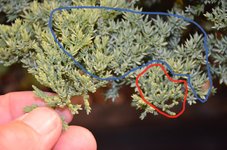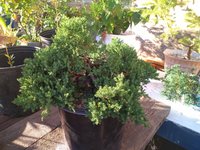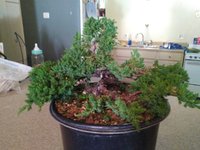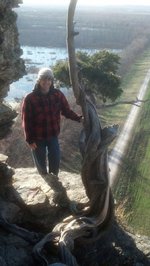Not in all cases, there are true needle junipers like Communis or Rigida that never will have scales, Procumbens although is in the Chinensis group dont behave as a regular scale junipers, no matter what you do it always will tend to revert with needle growth at the lightest prune, only very old pot bound specimens have mostly scale. Ryan explains it very well in a recent video
Before I play this video, and I will, I'm going to ask a silly but now honest question.
Isn't shimpaku scale? The reason I'm asking, is when I get aggressive on my procumbens
thinning and or pruning, some of the foliage will change, deviating from normal, then looking more like shimpaku where
it has obviously gone juvenile.
Therefore explaining what I'm perhaps confusing to
@canoeguide or anybody else.
It's needle like for years and years, I get aggressive and it throws scale like foliage.
Here are 2 pics of one of my procumbens foliage. Flash made them yellowish looking.
1st normal as if it were growing in the landscape or nursery container chugging along healthily.

Looks needle like to me.

2nd, after thinning in 2020 IIRC, it threw juvenile growth that more closely resembles shimpaku
than it normally does circled in red. It is more cylindrical. In blue, is normal growth that is displayed always
as a constant when satisfied. This is 100% of the time with my procumbens, how they respond to aggressive thinning.
This is what I was saying to
@HorseloverFat that his was displaying this cylindrical scale like growth
over a majority of the juniper, because that's what mine does when I intervene with techniques.
Now I'll grab a bowl of cottage cheese and Tostitos, and watch the movie and see what Ryan has to say on the subject.







